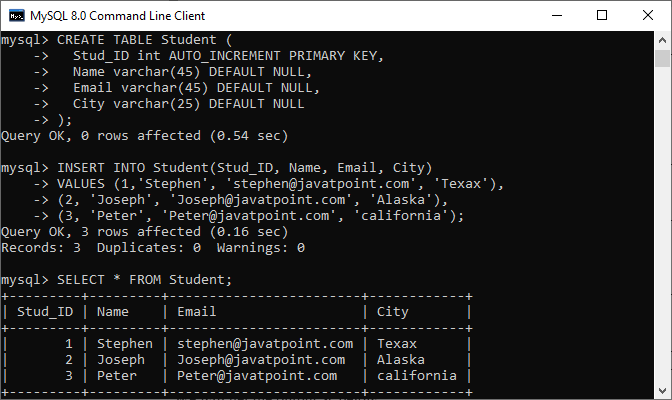
MYSQL INSERT ON DUPLICATE KEY UPDATE SOFTWARE
In comparison to an RDBMS, a DBMS requires fewer software and hardware. The number of users who are permitted to utilise the systemĪ DBMS can only handle one user at a time, whereas an RDBMS can handle numerous users.

The following are some further distinctions between database management systems and relational database management systems: This is not the same as the file storage utilized by a database management system. An RDBMS contains functions that ensure the data’s security, accuracy, integrity, and consistency. The development, administration, and use of database platforms are all supported by a database management system.Ī relational database management system (RDBMS) is a type of database management system (DBMS) that stores data in a row-based table structure that links related data components. It offers a stable means of storing and retrieving massive amounts of data.ĭatabases, in general, hold collections of data that may be accessed and used in other applications. The RDBMS is the most widely used database system in businesses all over the world. Most commercial relational database management systems use Structured Query Language (SQL) to access the database, which is stored in the form of tables. What is RDBMS? How is it different from DBMS?Ī relational database management system (RDBMS) is a set of applications and features that allow IT professionals and others to develop, edit, administer, and interact with relational databases. Let’s move to the next question in this SQL Interview Questions.

The data stored in the database can be modified, retrieved and deleted and can be of any type like strings, numbers, images, etc. A database is a structured collection of data.Ī DBMS allows a user to interact with the database. What do you mean by DBMS? What are its different types?Ī Database Management System ( DBMS) is a software application that interacts with the user, applications, and the database itself to capture and analyze data. Example – Grant, Revoke access permissions. Data Control Language(DCL) – It allows you to control access to the database.It helps you to insert, update, delete and retrieve data from the database. Data Manipulation Language(DML) – It allows you to access and manipulate data.Data Definition Language (DDL) – It allows you to perform various operations on the database such as CREATE, ALTER, and DELETE objects.MySQL is an RDMS (Relational Database Management System) such as SQL Server, Informix etc. SQL is the core of the relational database which is used for accessing and managing database SQL is a standard language which stands for Structured Query Language based on the English language What is the difference between SQL and MySQL? What is the difference between DELETE and TRUNCATE statements?.What is the difference between CHAR and VARCHAR2 datatype in SQL?.What do you mean by table and field in SQL?.What do you mean by DBMS? What are its different types?.What is the difference between SQL and MySQL?.Let’s get started! SQL Interview Questions The question is how I can't get "2015.01.Want to Upskill yourself to get ahead in your career? Check out the Top Trending Technologies. It doesn't work fine, file column does not become NULL but the other columns is updated, so I tried changing the part become, and it works as I hoped: file=if(VALUES(version)>version,null,file) => file=if(VALUES(version)>'2015.11.01',null,file) Update_date=' 11:34:13', file=if(VALUES(version)>version,null,file)
MYSQL INSERT ON DUPLICATE KEY UPDATE UPDATE
ON DUPLICATE KEY UPDATE `version`='2015.11.07.1', remark='IBS Sales App', And the command is like below: INSERT INTO sbm_sys.sy_version (mod_id,sub_mod,`version`,remark,update_date,file)

But everytime I executed I get my file column become NULL, result that I want is : file becomes NULL when version where I want to set is bigger the present(original) version. I want to update my data using insert into on duplicate key, for the first it is working fine. `update_date` DATETIME NULL DEFAULT NULL, I have sy_version table which has a 2-column primary key: (mod_id, sub_mod): CREATE TABLE `sy_version` (


 0 kommentar(er)
0 kommentar(er)
